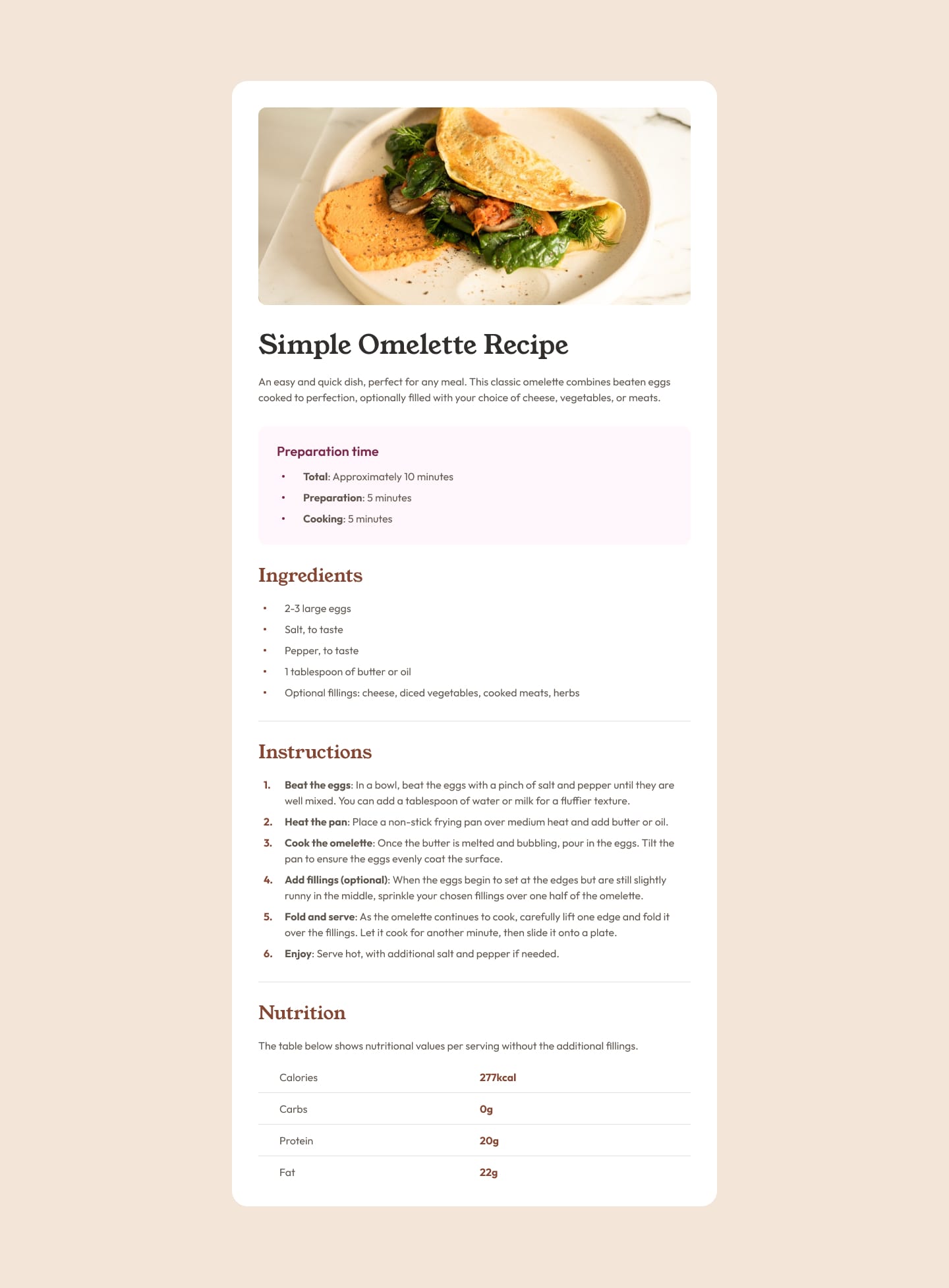


This is a solution to the Recipe page challenge on Frontend Mentor. Frontend Mentor challenges help you improve your coding skills by building realistic projects.
- Semantic HTML – This is an amazing article which helped me finally understand semantic HTML tags. I’d recommend it to anyone still learning this concept.
- BEM Methodology – The idea behind it is to divide the user interface into independent blocks. I really liked this pattern and will use it going forward.
- MDN (ARIA) – Accessible Rich Internet Applications (ARIA)
- Flexbox – This complete guide explains everything about flexbox, focusing on all the different possible properties for the parent element (the flex container) and the child elements (the flex items).
- Schemas.org – A collaborative, community activity with a mission to create, maintain, and promote schemas for structured data.
- The Open Graph protocol – The Open Graph protocol enables any web page to become a rich object in a social graph.
- Semantic HTML: The page uses semantic HTML tags to enhance readability and accessibility.
- Responsive Design: Adaptable to various screen sizes using CSS media queries.
- Accessible Content: Includes ARIA roles and attributes, Open Graph meta tags for social media sharing, and SEO-friendly descriptions.
- Structured Data: Incorporates schema.org microdata to provide structured information about the recipe (e.g., ingredients, nutrition, cooking time).
- Custom Styling: Styled with Google Fonts and a custom CSS file.
- Preparation time, ingredients, and step-by-step instructions.
- Nutritional information table.
- Fully optimized for accessibility and SEO.
- HTML5: For the structure of the webpage.
- CSS3: For styling the page (using a separate stylesheet).
- Google Fonts: For custom typography (Outfit and Young Serif).
- Open Graph Protocol: For enhancing social media link previews.
- schema.org: For structured data to improve search engine visibility.
- Search Engine Optimization: The microdata ensures search engines can understand the content better, improving its ranking and rich snippets.
- Enhanced Usability: Screen readers can now interpret the purpose and structure of the content more effectively.
- Security and Performance: External links are safer with
rel="noopener noreferrer".
- Frontend Mentor Profile: jguerra
Happy Coding! 🚀
 https://github.com/josemguerra/fem-omelette-recipe-page
https://github.com/josemguerra/fem-omelette-recipe-page

Leave a Reply